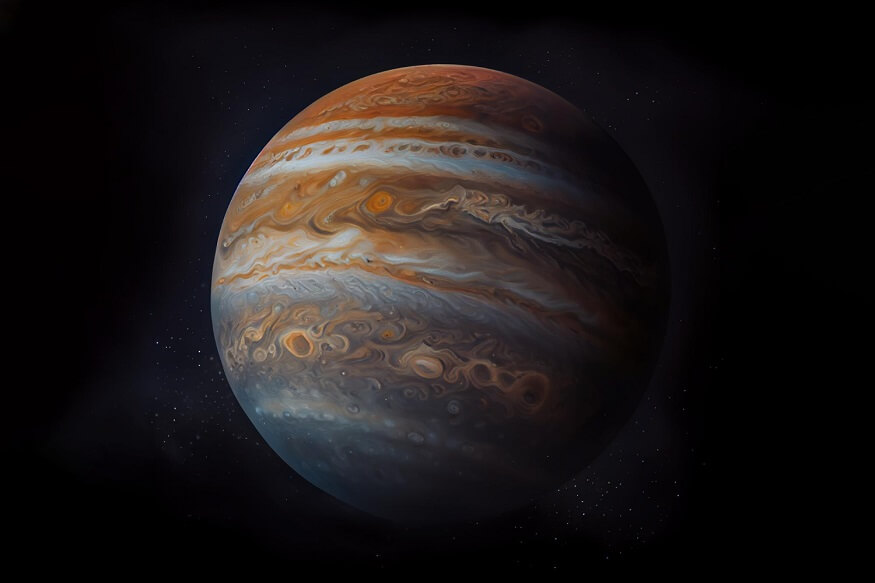Pluto is a dwarf planet located in the Kuiper belt just beyond Neptune’s orbit. It is the 9th largest and 10th most massive celestial object to orbit the Sun. Pluto, which used to be the 9th planet in our solar system, was in 2006 demoted to a dwarf planet by the International Astronomical Union (IAU). This led to widespread outrage as Pluto was somehow attached to the sensibilities of a large section of people across the world. Suddenly, Pluto was not a planet anymore. While the people’s arguments were more sentimental in nature, IAU had clear reasons for this decision.
Also Read: Tips To Get Children Interested In Space Science
Our Solar System
The solar system is the gravitationally bound system consisting of the sun and celestial objects rotating around the sun. Objects of various sizes orbit around the sun as a result of the gravitational pull exerted by the sun on these objects. The larger-sized objects orbiting the sun are known as the planets. Our solar system has eight planets: Mercury, Venus, Earth, Mars, Jupiter, Saturn, Uranus, and Neptune. Mercury is the smallest and Neptune is the largest in terms of size. Mercury is the nearest and Neptune is the farthest in terms of distance from the Sun.
Discovery of Pluto
Pluto was first discovered by astronomers Clyde W. Tombaugh and William H. Pickering on February 18, 1930, at the Lowell Observatory in Flagstaff, Arizona. This discovery was a result of an ambitious project started in 1906 to find the ninth planet by Percival Lowell, a wealthy Bostonian who founded the Lowell Observatory. The first sightings of Pluto are traced back to the Yerkes Observatory in 1909. Even Lowell Observatory reported the first sighting of what would be Pluto, in 1915. Unfortunately, Percival Lowell could not live to see the discovery of Pluto and died in 1916. The search for this new planet, or Planet X, lost pace after Lowell’s death. It was only revived in 1929 when the 23-year-old Clyde Tombaugh took command of the job at Lowell Observatory. Pluto was formally discovered within a year of his arrival.
How did it get named Pluto?
The discovery was a big achievement. It grabbed headlines all over the globe. Proposed names for the new ‘planet’ were received from all over the world. Lowell Observatory had the right to name the planet. They received more than a thousand suggestions. The finally chosen name Pluto was proposed by an eleven-year-old schoolgirl, Venetia Burney, from Oxford, England. The planet was formally christened Pluto on March 24, 1930. Venetia received five pounds as a reward for suggesting the name, Pluto. The name was formally published on May 1, 1930 post formal approval by the American Astronomical Society and the Royal Astronomical Society.
Also Read: Interesting Facts about Space for Kids
Knowing Pluto better
Pluto has a radius of 1,151 kilometres, making it one-sixth Earth’s size. Pluto is 5.9 billion kilometres away from the Sun. The temperatures on Pluto range from -233 to -223 degrees Celsius.
Definition of a planet
Till about 2006, a planet was loosely defined as any large object within our solar system. However, the IAU general assembly in 2006 passed a resolution that specifically defined what a planet is. This is how the planet was defined, “planets are celestial objects large enough to be made rounded by their gravitational orbit around the Sun and to have shooed away neighbouring planetary objects and debris.” This definition can be broadly broken down into three broad criteria an object must satisfy to be classified as a plant:
- It must orbit around the Sun
- It has sufficient mass to assume a spherical shape
- It has cleared its neighbourhood of any objects or debris
Why did Pluto lose out?
So why did Pluto get relegated as a result of this definition? Pluto did qualify for the first two criteria but failed on criteria number three. Granted that Pluto satisfied the “large enough” section but did not satisfy the “shooed away neighbouring planetary objects and debris” part. It is not large enough to exercise enough dominance to shoo away neighbouring planetary objects and debris. It has not been able to clear up objects and debris from its neighbourhood in its billions of years of existence.
Also Read: Science Stream Career Options after 10th & List of Courses after 12th
The third clause, which cost Pluto its position as a planet, essentially talks of the gravitational domination a planet exerts in its orbital vicinity. In simpler words, is the planet the most powerful object in its vicinity and does it possess the gravitational power to drive away other nearby objects? If not, then it means that it is not dominant enough and other objects might challenge Pluto for dominance in the future. Any such objects that qualified criteria one and two, but not three, were classified as Dwarf Planets.









